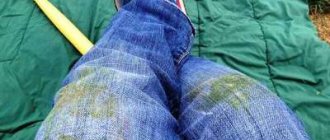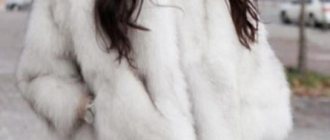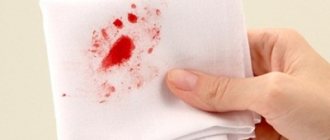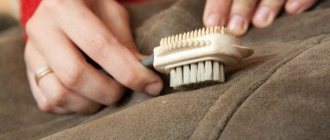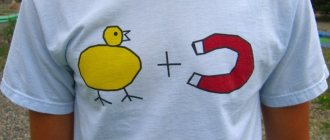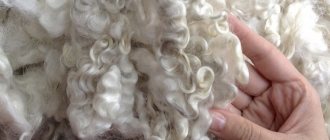Despite the availability of a huge number of window design options, classic white tulle remains the favorite of most housewives.
The material, which allows you to benefit from the opening and make the room spacious and bright, unfortunately has a “capricious” character and over time noticeably changes its color to pale yellow or grayish even in a perfectly clean room.
However, knowing several ways to bleach tulle at home, you can safely turn a blind eye to this small drawback!
In this article, we tried to collect all the effective methods, including those proven over decades and known to our grandmothers.
Bleaching with table salt
What to cook?
- 3-5 tablespoons of table salt (the most common - coarse);
- washing powder (not necessarily bleaching);
- pelvis
What to do?
- 1 Dissolve the salt and powder in warm water and immerse the tulle that has lost its whiteness in the resulting solution.
- 2 Leave it to soak for at least 3-4 hours (ideally overnight).
- 3 For heavy soiling, machine wash the fabric; for light soiling, simply rinse well.
- 4 For “prevention”, washed tulle can be rinsed in a saline solution after washing for several minutes.
Pros and cons of the method
- High-quality whitening will cost you a few rubles.
- You don’t have to look for salt specifically – it’s in every kitchen.
- This method can be used to wash children's curtains - salt is not an allergen.
- Salt bleaching will take several hours.
Features of bleaching for different materials
Before bleaching tulle, you must take into account the characteristics of the fabric. Nylon is quite wear-resistant, but it cannot be washed in water hotter than 30 degrees. It is best to use folk remedies for it. But for cotton fabrics, boiling with laundry soap and treating with starch and peroxide are best.
Organza is made from silk, viscose and polyester by special twisting of the threads. High temperatures and aggressive agents are detrimental to this fabric, otherwise it will lose its shape. How to bleach organza tulle? It is best to use salt, starch and blue, and in especially severe cases, soft oxygen agents.
To keep your curtains white and fresh for a long time, you need to wash them regularly. Then you won’t have to use aggressive stain removers and bleaches to remove stubborn dirt. And if the curtains are made of very expensive fabric, it is better to entrust washing and bleaching to professionals.
Blue bleaching
What to cook?
- Blue;
- pre-washed tulle.
What to do?
- 1 Wash by hand. Dilute half a teaspoon of blue in 7-10 liters of warm water, make sure that there are no “lumps” in the solution (they can leave stains on the fabric). Rinse the tulle thoroughly, first with blue, and then in clean water.
- 2 Washing in an automatic machine. Place the material in the drum and add your regular laundry detergent. Instead of conditioner or rinse aid, use blue in small quantities (1-1.5 caps).
Pros and cons of the method
- The whitening process does not take much time.
- As a result, the tulle becomes truly snow-white.
- Finding bluing in supermarkets or chain stores of household chemicals today is almost impossible - the search for “bleach” can take a long time.
- If you don't mix the powder thoroughly enough, difficult-to-remove stains will remain on the fabric. It is for this reason that it is better to rinse blue tulle manually - some machines “sin” by insufficiently dissolving the bleaching agent (whole pieces can get directly into the drum).
How to bleach tulle by hand
To make the curtains snow-white, it is not necessary to use expensive products and run the machine. The dust will come off in soapy water in a couple of minutes. Homemade bleaches will refresh curtains.
How to bleach and remove yellowness with laundry soap
One of the simple and effective ways to whiten curtains. It is necessary to grate the soap bar on a fine grater, and then completely dissolve the shavings in warm water. A dusty curtain is immersed in a cloudy solution and left for 2 to 8 hours.
Laundry soap also removes stains. Dirty marks are lathered locally and left for several minutes. For best effectiveness, it is recommended to place the treated tulle in a plastic bag and tie it. After a couple of hours, the fabric is washed.
Soap perfectly removes traces of soot and grease, and returns the color to a gray curtain. It is recommended to bleach nylon that has turned yellow from the sun with soap.
How to bleach synthetic tulle with salt
A cheap and simple method that is suitable for natural and synthetic fabrics. The salt solution will draw out dust and add shine. How to use:
- Remove the curtain from the curtain rod and shake it well.
- Fill a basin or bathtub with warm water.
- Dissolve salt at the rate of a tablespoon per liter of water.
- Add 100 g of washing powder.
- Immerse the material in the resulting mixture.
- Let it sit for 4–8 hours depending on the amount of dirt.
- Wash with soap or liquid powder.
Nylon is bleached a little differently. Salt is poured into water at room temperature (1.5 tablespoons per liter). Nylon curtains are immersed in the resulting solution and left for 15 minutes. Then you need to rinse the material several times in clean water and leave it on the edge of the bath to drain off excess moisture.
You can bleach a yellow cotton curtain with salt and soda. First, the curtain is soaked in soapy water. When the dust and most of the dirt are gone, the curtain is immersed for 2-3 hours in a soda-salt solution (two tablespoons per 5 liters of water). Afterwards, rinse and hang to dry.
Salt does not cause allergies, so it is suitable for bleaching curtains in a children's room.
How to bleach nylon and organza with brilliant green
Brilliant green perfectly removes yellowness even from capricious fabrics, such as organza. Before bleaching the tulle with green paint, you must first wash the curtain. First, the dust is shaken out, then the curtain is soaked in soapy water for 5–8 hours. Afterwards it is washed by hand with soap, gel or liquid powder. During the last rinse, green stuff is added:
- Add 15 drops of brilliant green to a glass of water.
- Leave to infuse for 5-7 minutes.
- Stir and leave for another 5-7 minutes until the sediment disappears.
- Add to a bowl of clean water to create a solution with a barely noticeable green tint.
- Immerse the curtain and leave for 10 minutes (turn occasionally).
- Rinse and hang to dry.
To enhance the effect, before rinsing with greenery, the material can be soaked in a saline solution for 2–3 hours. Prepared at the rate of 5 tablespoons per liter of water. During the entire procedure, only cool water up to 40 °C is used.
A large amount of greenery will give the product a greenish or turquoise tone. Therefore, it is important to accurately observe the proportions. There should be no sediment in the solution that will transfer to the fabric.
How to restore whiteness with salt, peroxide and ammonia
A fairly effective method to bleach synthetic material. The solution will not remove stubborn dirt, but it can significantly refresh a tarnished curtain.
How to cook:
- Immerse the curtain in soapy water, leave for two hours, and rinse.
- Wash by hand with soap.
- Dissolve 6 tablespoons of salt and 50 g of washing powder in 10 liters of water.
- Add a tablespoon each of ammonia and peroxide.
- Place tulle in the solution and leave for 5–8 hours.
- Rinse well and hang to dry.
How to remove yellowness with soda and boric acid
It is better to use boric acid in powder form. The solution is prepared for soaking before the main wash. This method will help to bleach the yellowness of synthetics and refresh an old curtain.
How to prepare the solution:
- Add soap to a bowl of water.
- Add a tablespoon of soda and 10 g of boric acid (1 sachet).
- Immerse the curtains and leave them for a day, turning them over periodically.
- Drain the dirty water and wash the tulle by hand as usual.
To bleach stained cotton, you can increase the concentration of acid and soda by 2-3 times.
How to quickly bleach with peroxide and alcohol
This is the fastest way to bleach cotton. What should be done:
- Pour warm water (60 °C) into a basin.
- Dissolve 3 tablespoons of hydrogen peroxide.
- Add a tablespoon of alcohol (you can take vodka).
- Stir and immerse the material in the liquid.
- Wait for half an hour.
- Rinse, wait for excess moisture to drain, and hang to dry.
Similarly, it is recommended to bleach nylon tulle with peroxide and alcohol. However, it must be kept in cold water (20–30 °C).
How to tint tulle with blue
If you can’t bleach it white, you can tint yellowish curtains. Blue powder is added to washed items to impart a bluish tint and refresh the fabric. How to prepare the solution:
- Add a teaspoon of blue water to 10 liters of warm water.
- Mix thoroughly so that there are no lumps or sediment left.
- Dip the curtain and turn it over several times to distribute the paint evenly.
- Rinse the curtain with clean water.
If you overdo it with bluing or mix it poorly, bluish stains will remain on the fabric. Should not be kept for a long time.
How to bleach cotton and veil with starch
The product is most often used to bleach cotton. After use, the tulle will keep its shape for a long time. In addition, starch creates a protective film, making the material less contaminated.
How to whiten:
- Clean the material from dust and soak in soap and water.
- Dissolve potato starch in water (a tablespoon per liter).
- Immerse the curtains and soak for 5–6 hours.
- Rinse to remove excess starch and leave to dry.
It is necessary to completely dissolve the powder so that no lumps remain. A large amount of starch will make the tulle stiff.
How to bleach an old curtain with soda
Natural bleach will return a snow-white appearance to even old tulle. How to whiten:
- Dilute two tablespoons of soda in 10 liters of water.
- Immerse the item so that the solution completely covers the fabric.
- Leave for 2-3 hours.
- Rinse several times in clean water.
A combination of baking soda and washing powder will remove grayness from tulle. Both ingredients must be diluted in 5 liters of warm water. The tulle curtain is immersed in the solution and left for 2–3 hours. Then it is washed several times with clean water.
To bleach thin fabrics, it is necessary to mix the soda thoroughly so that no large grains remain that can damage the material.
Bleaching with brilliant green
What to cook?
- Zelenka;
- cup;
- pelvis
What to do?
- Stir 5-10 drops of greenery in a glass of warm water and leave it for a few minutes.
- Evaluate the result - if you do not see any sediment, the solution is ready and can be poured into a basin for rinsing (7-10 liters of warm water).
- If there is still sediment, mix the contents of the glass well again or strain it before “sending” it into the basin.
Place the tulle, previously washed in the usual way (by hand or in a machine), in a basin with a solution of brilliant green and leave there for 3-5 minutes, turning the material over a couple of times. Hang the curtain and let it drain.
Pros and cons of the method
- Zelenka is in every home medicine cabinet.
- Brilliant green solution is very cheap compared to household chemicals.
- Returning the color to tulle takes a minimum of time.
- If you do not mix the greenery well enough, the material will not acquire a snow-white hue, but light green stains, which are quite problematic to remove.
Useful tips
There are several recommendations that it is advisable to find out before the procedure. Following them will help you achieve good results.
- It is advisable to shake off the dust from the tulle. It's better to do this outside. If you put the curtain to be washed directly, a large amount of dust will be absorbed into the structure of the fabric.
- Before bleaching, it is correct to wash the accessory by hand or in a machine (depending on the material). Bleaching cannot replace washing, and if it is neglected, the result will not be very good.
- Washing should be done on a delicate cycle without spinning. Otherwise, wrinkled tulle will be difficult to iron out. The drying sequence should be as follows: hang the washed curtains so that the liquid drains from them, and when the dripping stops, you can return them to the curtain rod, where they constantly hang. All folds will straighten out under their own weight.
- By the way, in order for the material to wrinkle less, it must be carefully folded before loading it into the drum. This will help avoid unpleasant creases that form due to careless handling.
- Water for treatment should have a temperature of no more than 30 degrees. If you soak it in hot water, the yellowness will penetrate even deeper into the thread.
Whitening with ammonia and hydrogen peroxide
What to cook?
- Ammonia;
- 3% hydrogen peroxide.
What to do?
- 1 Add 1 spoon of alcohol and 2-3 spoons of peroxide to a bowl of water heated to 60 degrees, mix the solution well.
- 2 Dip the tulle in it for half an hour.
- 3 After this time, rinse the fabric well, wring it out without twisting, and hang it to dry.
Pros and cons of the method
- Cheap: one whitening treatment costs less than 10 rubles and still gives excellent results.
- You will spend a minimum of time on washing - no overnight soaking is required.
- This method should only be used for bleaching cotton materials.
Recommendations for bleaching curtains
In order not to damage the curtains, it is necessary to take into account the material of manufacture. Otherwise, the fabric may shrink, become deformed, fray or turn yellow.
Organza
This is a thin and beautiful fabric created by weaving threads of silk, viscose and polyester. When bleaching organza, you should not use aggressive methods, such as washing with chlorine-containing bleaches and boiling. Washing in hot water can also damage the fabric. You can gently bleach curtains using solutions of brilliant green, blue and alkaline soap.
Capron
Nylon is also a capricious material. Polyester is used in the manufacture of such curtains. It is recommended to wash nylon curtains at 30 degrees. You can bleach with laundry soap, salt and potassium permanganate. Industrial bleach should not be used.
Chiffon
In the manufacture of chiffon curtains, an interweaving of silk and cotton threads is used. Sometimes synthetics are used to increase strength. Wash in cold water; salt and soap solution are suitable for bleaching.
Veil
When making fabrics for voile curtains, polyester, cotton and silk are used. Wash at 30 degrees and without spin. Salt, brilliant green, blue and starch are suitable for bleaching.
Jacquard
Such curtains are made from natural, mixed and synthetic threads, using a special machine for jacquard weaving. In this case, when caring, it is necessary to take into account the composition of the fabric. It is not recommended to twist the curtains while pressing, so as not to deform the patterned texture.
Tulle mesh
There are a wide variety of mesh tulle varieties. Models vary in the type of weaving, the presence of embroidery, the shape of the cells and structure. Such curtains can be made from nylon or polyester. They are wear-resistant and hold their shape well, but due to their texture they collect a lot of dust. You need to wash it once every two to three months at a temperature of 30 degrees. Almost all methods are suitable for bleaching, except boiling.
Whiteness with starch
What to cook?
- Starch;
- large container (basin or bucket).
What to do?
- 1 Clean the tulle from dust, and if it is heavily soiled, wash it in the machine as usual.
- 2 Place the prepared material in a bowl of warm water, in which 250 grams of ordinary starch have been thoroughly mixed.
- 3 Leave the curtains in the solution for 5-6 hours, then hang them without wringing them out.
Pros and cons of the method
- Minimum cost of whitening
- Starch can be found in any store.
- The tulle will not only become snow-white, but will also keep its shape well.
- You'll have to spend several hours.
Important Tips
It is also important that before using a particular detergent, the fabric must be prepared.
So, before washing you need to:
- Clean curtains from dust.
- Never use water whose temperature exceeds 40ºC. It is important to know that hot water will simply seal the stains and further removal will be impossible.
- Do not use several different household products at the same time; the chemical reaction may be unpredictable.
- To make it easier to iron the curtains, you can use special rinses or add 1 tbsp to the rinsing water. l. vinegar.
Now all the secrets of how to wash a curtain that has turned yellow from time or sunlight have been revealed. The choice is quite large, and every housewife will find exactly the one that will help give the curtain an extraordinary snow-white look.
Save
Save
Bleaching with potassium permanganate
What to cook?
- Potassium permanganate;
- laundry soap (72 percent);
- pelvis;
- cup;
- grater
What to do?
- 1 Finely grate 100 grams of soap and stir the resulting mass in warm water.
- 2 Dissolve a small amount of potassium permanganate in a glass of water, make sure there is no sediment and pour the resulting solution into a basin. The result should be slightly pinkish water with a small amount of soap suds.
- 3 Soak the tulle in the basin for half an hour and wash it in the usual way (by hand or in a washing machine).
Pros and cons of the method
- Excellent results that last quite a long time.
- Minimum time spent.
- Finding potassium permanganate today is quite difficult.
How to wash tulle in a washing machine
To wash tulle in a washing machine, there are certain rules that must be followed. And if the preparation stages associated with removing fasteners and dust are the same as washing by hand, then discrepancies begin.
- Soaking is acceptable, but not necessary. Only for heavily soiled areas.
- Loading - either in a special bag or neatly folded.
- Choice of remedy and dosage. Preferably gels in a lower dosage than usual. Adding means of national production will be ineffective. If there is a need to use them, use them at the soaking or rinsing stage. To avoid triggering an unexpected reaction, use neutral solutions.
- Water softeners are used if the water is hard, which can lead to gray fabrics.
- Program. Gentle or manual mode with low temperatures at low speeds.
You should remove the curtain from the machine immediately after completing the assigned task to prevent the fabric from becoming wrinkled.
Digestion
What to cook?
- Bucket or large saucepan;
- washing powder or laundry soap.
What to do?
- 1 Dissolve powder or soap in water, put tulle in a container and put it on the fire.
- 2 Wait until the water boils and simmer the fabric for an hour, stirring occasionally.
Pros and cons of the method
- Cheapness.
- The method requires constant presence nearby.
- The method is quite inconvenient and really outdated - we recommend boiling tulle only when dealing with yellowness, which has not been “taken” by other washing methods.
Boiling the fabric
This is the easiest way to bleach tulle, requiring a minimum of cost from the housewife. Those who choose it are required to act like this:
- You should take a large saucepan, fill it with water and put a large amount of soap crumbs or soap into the water. You can use washing powder instead. You should wait until these components are completely dissolved in water.
- Next, you need to put the curtain itself in the same pan, which needs to be rid of grayness and yellow spots. It needs to be boiled for about an hour.
- After this, the fabric will need to be rinsed and dried.
Important: remember that this bleaching method is not suitable for all materials. Many synthetic fabrics deteriorate from such exposure.
Are whitening and modern bleaches effective?
It is not for nothing that we did not mention in the main material about traditional whiteness and modern bleaches, which, according to manufacturers, use innovative formulas.
Undoubtedly, the listed means give excellent results and, importantly, do not require a lot of time to achieve them. As a matter of fact, this is where their advantages end.
Whiteness literally “destroys” the fabric and after 2-3 uses, thin tulle can tear from any careless movement.
In addition, after the second wash with white, the material does not acquire a snow-white tint, but a shade close to yellow.
The same applies to innovative products: having a considerable cost, they give excellent results only the first time they are used.
Useful tips
Do not use chemicals unless absolutely necessary. And the use of chlorine is generally contraindicated. Give preference to oxygen gels. Always consider fabric composition when intending to manipulate tissue.
Rules for washing tulle made of delicate and light fabrics:
- Mechanical cleaning. There can be no question of it if the composition of the tulle is delicate: no brushes, abrasives or powders. A cleaning method that involves rubbing fabric against fabric is also discarded - it is fraught with stretching and deformation of the delicate fabric.
- Squeeze and tap. You only need to wash the tulle with light squeezes and pats of the dirty area. If the localized stain problem is not neutralized the first time, the solution used for soaking and washing is changed and the washing is repeated.
Regardless of the composition and method, before washing the tulle, it must be cleaned. It consists of getting rid of large accumulations of dust. It is convenient to carry out the procedure outdoors - just shake the curtain several times.
Under no circumstances should you use brushes or abrasives - this can lead to the formation of abrasions, permanent yellowness, pellets and even holes.
How to dry properly
To avoid fabric deformation, twisting and wringing are kept to a minimum. It is ideal to let the water drain on its own - to do this, the tulle should be hung on a rope.
Drying should be done away from heating devices. Avoid direct sunlight.
When water stops dripping from the curtains, they can be returned to their usual place - on the curtains. Thin tulle will not only dry, but also smooth out, without requiring ironing.
Ironing rules
Almost all tulle, except cotton, cannot be ironed. To avoid the need for an iron, dry properly.
If the process cannot be avoided, use low temperatures, use a cloth (for example, gauze) to iron on it, and not on the fabric of the curtain itself. Iron in “Silk” mode.
Despite the prejudice: the more you wash, the cleaner the tulle will be - frequent washing will inevitably lead to the loss of its attractive appearance. This is a sure way to damage the fabric, which is difficult or even impossible to neutralize. Therefore, wash your tulle no more than four times a year, but do it correctly.
Additional recommendations
- 1 Be sure to shake out the tulle before soaking.
- 2 In all cases (except where indicated), do not use too hot water: a temperature of 30-35 ⁰C is optimal. Washing in boiling water will “seal” stains and yellowness rather than remove them.
- 3 Wash and soak the tulle, after carefully folding it. If you throw crumpled material into the basin or drum of the machine, the resulting creases will be very difficult to smooth out.
- 4 When washing, add a tablespoon of table vinegar to the water - the smell will not appear from such an amount, and the curtains will shine in the sun.
- 5 Do not iron the tulle after washing - gently wring it out (without twisting!) and let it drain. Damp curtains can be hung on a curtain rod - they will straighten under their own weight.
The tips listed above on how to bleach tulle at home have passed the most important test - the test of time. You can safely follow these recommendations without fear of harming thin and delicate material.
Traditional washing method
Today, there are many modern ways to create shade in a room and at the same time decorate window openings. But tulle still remains in the lead.
There are several ways to wash curtains; you can use conventional chemicals that are intended for washing, or you can use folk recipes and methods for bleaching tulle. Both groups of methods for washing curtains deserve attention and can be used in one case or another.
The choice of cleaning method must be made based on the composition of the fabric and its condition; for example, fabric containing a certain amount of polyester may acquire a rather unpleasant yellow color after contact with chlorine. It is necessary to know the characteristics of the fabric and recommendations regarding washing methods. So, we can conditionally divide tulle into traditional and non-traditional methods of bleaching. Each has its own advantages and disadvantages that you need to know before choosing a washing method.
The easiest way is to wash curtains using detergents and bleaches. These products may have different compositions and differ in consistency and rules of use. You can buy whitening products in any supermarket or in specialized stores. Bleach has always been used to clean white clothes.
Products that can restore the snow-white color of fabric usually have a liquid consistency, but recently new types of bleach in the form of powders are increasingly appearing.
Advantages of whitening using household chemicals:
- Modern products have a certain classification, which allows you to select a drug for different types of tissue. For example, curtains are best cleaned with products designed for delicate fabrics.
- The use of household chemicals significantly reduces washing time and does not require physical effort.
- These products can whiten fabrics even with old stains.
You may also be interested in: The best recipes for bleaching tulle at home
The disadvantages of using chemicals are the following:
- Chlorine, which is contained in bleaches, is considered an aggressive component that destroys the structure of the fabric. Violation of the rules of use or prolonged exposure of the fabric to the products will lead to a change in color and spoil the appearance of the curtains.
- For some types of fabric, such household chemicals are completely unsuitable; it may happen that it destroys the fabric into holes or changes the color from white to yellow.
- You cannot use chlorine-containing preparations on one item several times. Many products destroy the fabric gradually and after the second or even third use, dark yellow spots will appear on the tulle.
But if you choose your household chemicals wisely, follow the recommendations from the fabric manufacturer and do not violate the bleaching instructions, the result will be positive.
